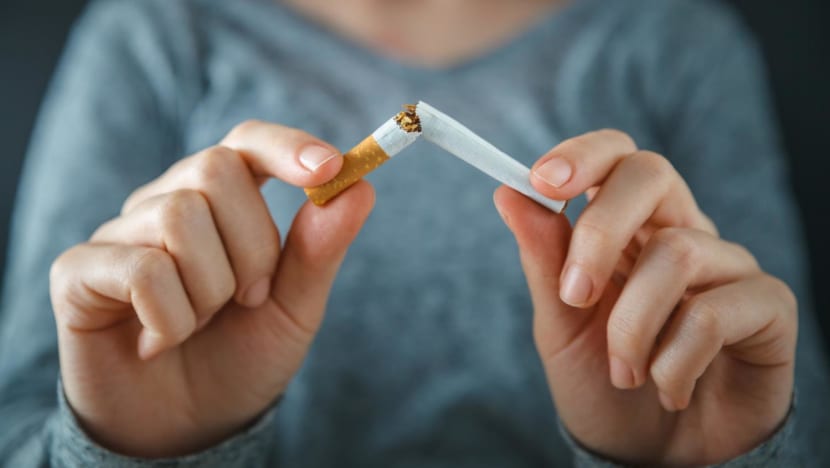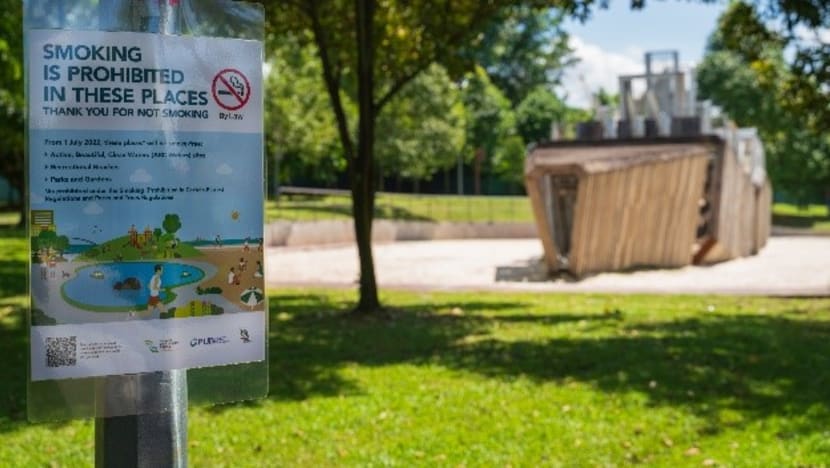Commentary: Tobacco tax hike needs to be repeated every year to bring down smoking rates
Amid the rising cost of living, making cigarettes more expensive could motivate more smokers to quit. Here’s how to make good intentions stick, says Yvette van der Eijk of the Saw Swee Hock School of Public Health.

SINGAPORE: Cigarettes are about to get more expensive. On Tuesday (Feb 14), Deputy Prime Minister and Finance Minister Lawrence Wong announced that tobacco taxes will increase by 15 per cent.
Tobacco taxes in Singapore have not been raised in half a decade, with the last increases in 2014 and 2018. These two increases were also relatively modest, at just 10 per cent each.
The latest tax increase is expected to generate an additional S$100 million in revenue each year. But beyond providing a boost to the economy, will the tax increase help to lower the smoking prevalence in Singapore?
The prevalence of daily smoking has been hovering around 10 per cent in recent years, according to the Ministry of Health. Policy moves in the last few years have involved raising the minimum legal age to 21 years, plain packaging to reduce marketing appeal, and prohibiting smoking in more public areas.
DOES RAISING TOBACCO PRICES AFFECT SMOKING HABITS?
The effect of tobacco taxes on tobacco consumption boils down to simple economics: The more you raise taxes, the more consumption goes down.

But just how sensitive are consumers to changes in a product’s price? The price elasticity of tobacco in high-income countries is around -0.4 which means that, for every 10 per cent price increase, demand goes down by 4 per cent.
Thus, tobacco taxes need to be quite high to have a significant impact on smoking behaviour.
The price elasticity also varies between different age and income groups. Studies from Australia, the United Kingdom and United States found that low-income individuals are twice as sensitive to price increases in tobacco.
With the cost of living already up, hitting smokers in their wallets could have a higher-than-usual impact as people look for more ways to cut back on spending.
TAXES NEED TO MAKE TOBACCO LESS AFFORDABLE OVER TIME
Tobacco taxes can also reduce smoking prevalence in the long term. To be effective, however, taxes need to make cigarettes less affordable over time.
A tax increase of 5 per cent or 10 per cent is barely enough to keep pace with inflation, especially in the current economic climate. Singapore’s latest tax hike, at 15 per cent, is higher than the current inflation rate, but does not guarantee that the affordability of tobacco products will be reduced by the same amount year upon year.
In some countries, tobacco taxes are structured such that they will always be higher than inflation. Australia, for example, increases tobacco taxes every year by the rate of inflation plus 12.5 per cent.
To ensure that tobacco products become increasingly unaffordable over time, tobacco taxes also need to be frequent and sustained over time. Even a high tobacco tax hike of around 20 per cent will not have much impact if only done once, or if only done every three or four years.
For Singapore’s 15 per cent tax increase to effectively reduce smoking rates in the long term, it will need to be repeated every year. It would still help if increased every two years, but it will take far longer to reap the same population health benefits.
MITIGATE TOBACCO COMPANIES’ PRICING STRATEGY
It is also important to pay attention to how taxes might affect different types of tobacco products.
When tobacco taxes increase, instead of quitting, some of the more price-sensitive smokers may “downtrade” to a cheaper brand.
Tobacco companies actually encourage downtrading. Instead of pricing the tax increase equally across all products, they tend to play with the pricing such that premium brands become more expensive while the price of value brands stays about the same.
To prevent downtrading, policy should reduce the price differential across different products. In Australia, tobacco taxes include a fixed amount per cigarette and an additional percentage of the retail price.
HELP THOSE MOTIVATED TO QUIT
Since tobacco taxes tend to motivate quitting, it is important to provide smokers with the resources to follow through on their intentions.
Although evidence-based quit support such as nicotine patches and counselling are available in Singapore, they are not currently subsidised. This presents a cost barrier for low-income smokers, who will also be more sensitive to the tax increases.
One way to fund quit services is to earmark some of the tobacco tax revenues, rather than sending it all into the Government’s consolidated funds. In the Philippines, 85 per cent of the “sin tax” is funded back into healthcare.
The 15 per cent tobacco tax hike in Budget 2023 is a step in the right direction, but the tax policy needs to be sustained and complemented with more effective quit services if Singapore wants to get more smokers to kick the habit.
Yvette van der Eijk is Assistant Professor at the Saw Swee Hock School of Public Health, National University of Singapore.


















